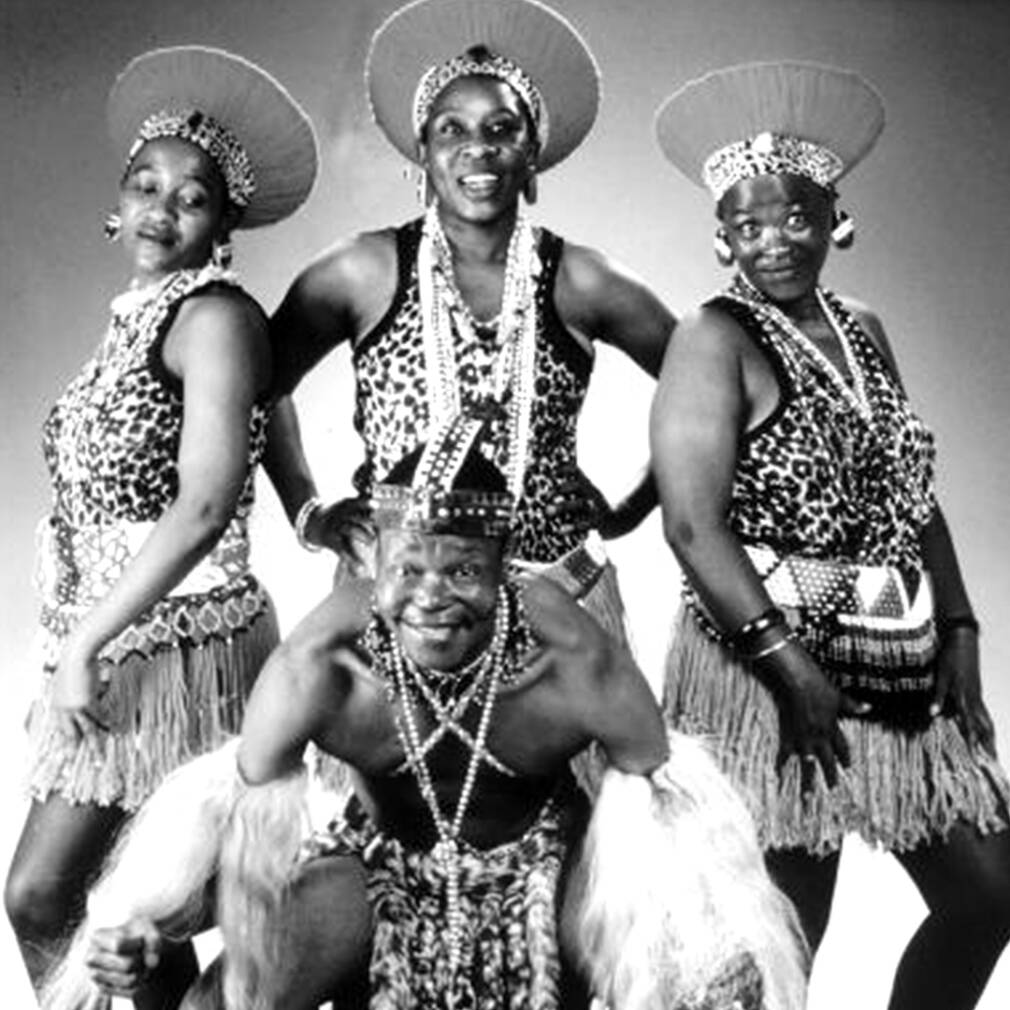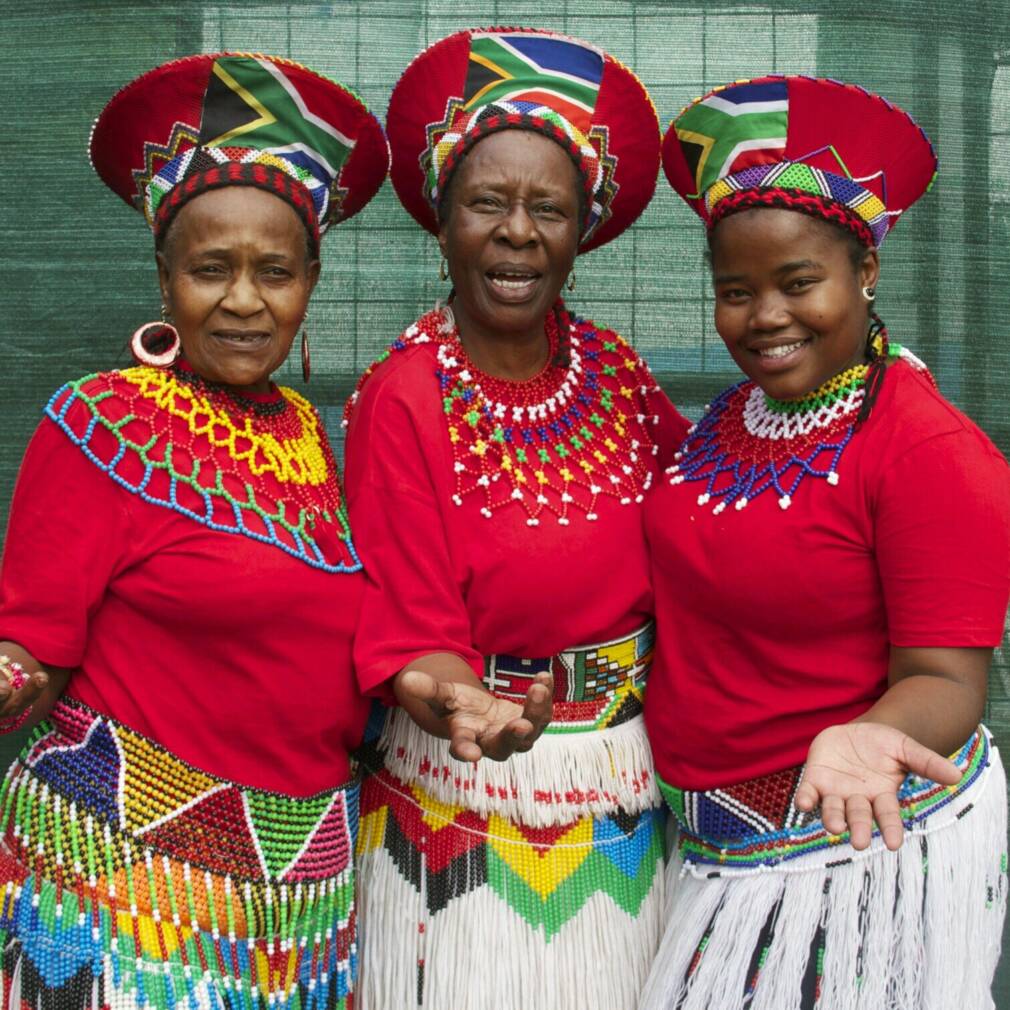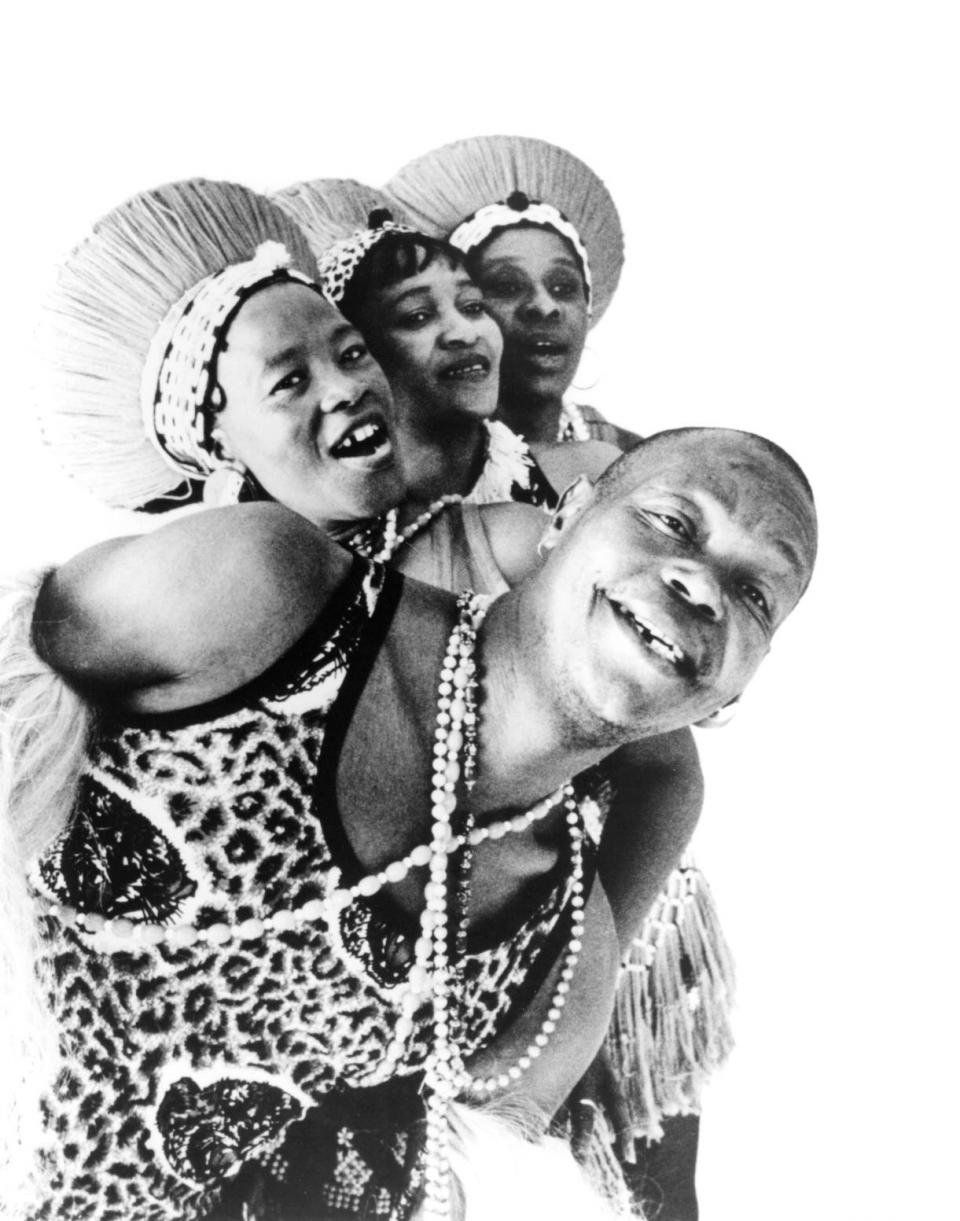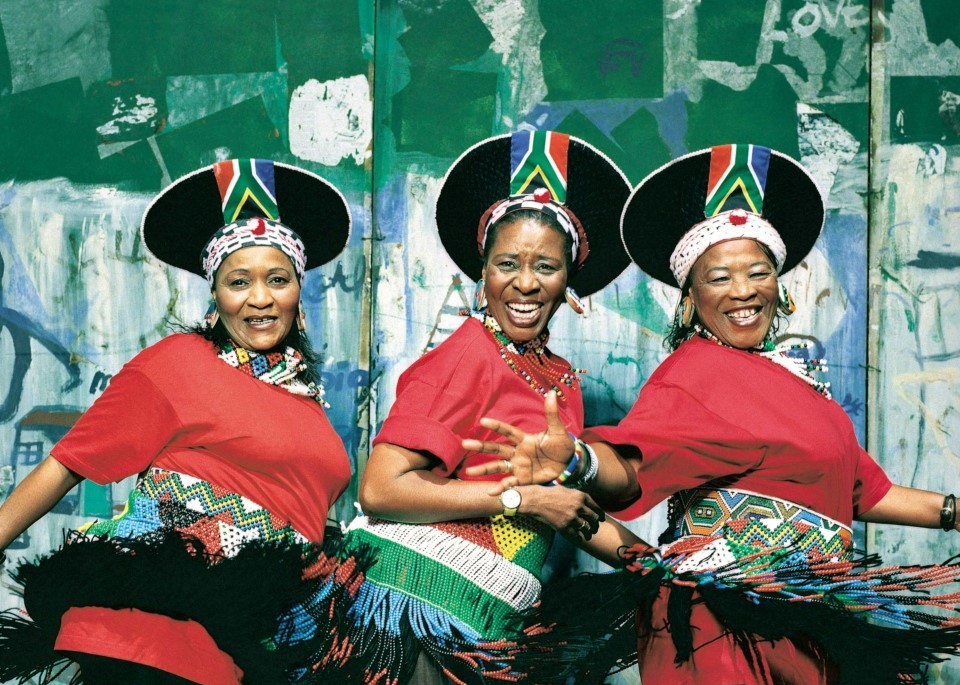Mbaqanga is a South African, jazz influenced style that developed out of the cultural and sonic practices of an oppressed African class, directed at migrants and partly urbanised industrial and domestic workers who retained ties to rural culture. It is a combination of traditional songs that have been adapted to urban sonic resources and rhythms over electric guitar, bass, keyboard, and drum sets – predominantly held up by a distinct bass solo voice and intricate harmonies of female vocals and electric dance styles. South African scholar, Dr. Sazi Dlamini situates mbaqanga as a reaction to a domestic condition of apartheid induced urbanisation. He sees it as a response that grew in relation to asymmetrically distributed resources of skills and material culture that was the consequence of an unequal system of aparthied that sought to alienate Black people from their traditions, culture and labour. He shows that mbaqanga is often thought of within the context of Apartheid state violence, the curtailment of Black people’s movement in cities, and within the context of the formation of a Black urban working class. In other words, it is largely understood as a style of music that comes out of the specific conditions of apartheid cultural brutality. Over time mbaqanga’s popularity decreased among the Black urban working class as result of this class’s identification with urbanisation and new western sonic notations in the form of African American funk and soul. This decrease in popularity can also be seen as a break away for purist indigenous cultural sensibilities in music under the pressure of modernity and a growing global community consciousness through sound. Local urbanised audiences gravitated towards a hybrid cultural aesthetic of sounds and a melting pot of genres from pop, funk, jazz, disco and soul all of which grew strong roots in South Africa. I think it is both important and necessary to think about Mahotella Queens within this cultural and political context because this allows us to understand the conditions that formed this group and the conditions that they had to overcome to keep their sound signature relevant.
Mahotella Queens formed in 1964 under the direction of record producer Rupert Bopape who worked at the Mavuthela music company, which formed part of Gallo records at the time and largely dedicated to recording black music. The Queens were part of Gallo’s in-house session singers with the original members including lead singer Hilda Tloubatla, Nobesuthu Shawe, and Mildred Mangxola. Vocalists Juliet Mazamisa and Ethel Mngomezulu were later brought in to make up the initial formation of the vocal outfit. Bopape joined Simon ‘Mahlathini’ Nkabinde’s groaner vocal aesthetic and the Mahotella Queens were backed by stellar instrumentalists under a band called Makgona Tsohle. He set the tone for future mbaqanga outfits and it became in vogue for mbaqanga groups to be led by a male groaner. The Queens became a five women group with no formal training, emerging with a sound that reflected the nostalgia of countryside cultural practices mixed with the burgeoning up-tempo sound of the new urban city. They were reflective of the in-between status of homeland belonging and urban labouring realities, while holding the hopes and imaginations of a transitory class that was going through what David Copland calls a process of “urbanising but not westernising”. They stayed true to their Zulu cultural roots by performing in their iconic, radiant traditional attires and displaying a performance style that represented the everyday hype of Zulu indigenous styles of dance and movement. The Queens held the hopes of people who were still rooted in the cultural values of their homeland upbringing but were also grappling with a hybrid city culture, dialects and ways of living that came out of their new status as urbanised Blacks. The Queens’ mbaqanga represented this negotiation and compromise – much of their music spoke about the memories of rural life and the experiences affecting Black urbanists. Their music responded to city life and how Black people found new ways of being cultured in completely foriegn spaces and under different value systems without necessarily succumbing to the cultural influence of the western world.

Their partnership with Mahlathini saw them rise to great strength in the sixties with hits that included ‘Thoko Ujola Nobani’, ‘Sengikhala Ngiyabaleka’ and ‘Umculo Kawupheli.’ In 1971, the Queens disbanded after contractual and royalties disputes with Rupert Bopape, some of the original member joined another group called ‘Izintombi zesi manje manje’ and Bopape continued to work with the Queens by refreshing the line up with Beatrice Ngobo, Thandi Radebe, Caroline Kapentar, Thandi Nkosi and Emily Zwane. Under the new line, the Queens continued to make successful records and perform throughout the seventies. They worked with various lead male vocalists such as Robert ‘Mbazo’ Mkhize who led a group called ‘Abafana Baseqhudeni.’ Following Bopape’s retirement as producer of the Queens, guitarist Marks Mankwane took over helping the group produce successful records such as “Izibani Zomgqashiyo”, “Tsamaya Moratuoa”, “Thatha Izimpahla Zakho”, “Ezesimanje” and “Tsa Lebowa”.
The 1980s saw a rapid decline in mbaqanga and the Queen’s popularity also decreased with the changing tide of local sonic palettes in favour of African American soul, funk and disco sounds. In this period, original members Hilda Tloubatla, Nobesuthu Shawe, Mildred Mangxola reunited with Mahlathini and the Makgona Tsohle band producing sprawling hits and success after the release of Thokozile in 1986. In 1987 the reunion of Mahlathini and the Mahotella Queens coincided with the release of Paul Simon’s Graceland album which introduced the Queens to an international audience, positioning their sound within world music. Mbaqanga also known as simanje-manje music grew into the hearts of a much wider audience outside of South Africa. The Queen’s infectious harmonies and colourful vocal range are all the elements that have made this group an important part of South Africa’s cultural heritage.

In the late 1990s, the Queens went into a silent period following the death of fellow musicians, Mahlathini, Mankwane and West Nkosi. Subsequently, they continued to perform and record music, and secured tours around the world entrenching their eternal status as one of the ideologues of South African traditional sounds and mbaqanga. In the 2000s they were part of an international compilation 1 Giant Leap, which showed the groups continuing international relevance and wide network of support in Europe and a dominant fanbase in France. They also released albums such as Sebai Bai, an eccentric album that deviated from their traditional mbaqanga style titled Bazobuya and an acapella album in 2005 Reign & Shine. Throughout this period, the Queens headlined festivals such as WOMAD in July 2006, and toured with another South African iconic group Ladysmith Black Mambazo. In 2007 they released a gospel album of traditional Zulu hymns titled Siyadumisa. In 2016 they collaborated with South African rapper Cassper Nyovest on his hit track titled “Malome”.
With a career spanning over fifty years, through tragedy, triumphs, changes in local ears, throughout the impossible industrial complex of Apartheid and modernity they have managed to stay true to their sound and signature without succumbing to the totalising pressure of contemporary language and relevance. Throughout their new collaborations they have maintained their tradition while making it relatable to younger audiences. Not without internal changes and challenges, original member Mildred Manxola retired in 2013 and she was replaced by Amanda Nkosi. In 2021, the group faced the devastating loss of its long standing member Nobesuthu Shawe. The legacy of Mahotella Queens is about endurance, hard work, the unquantifiable value of originality, authenticity, and an ability to adapt with the changing tides of sonic styles and aesthetics.
Rest In Peace Nobesuthu Shawe.





